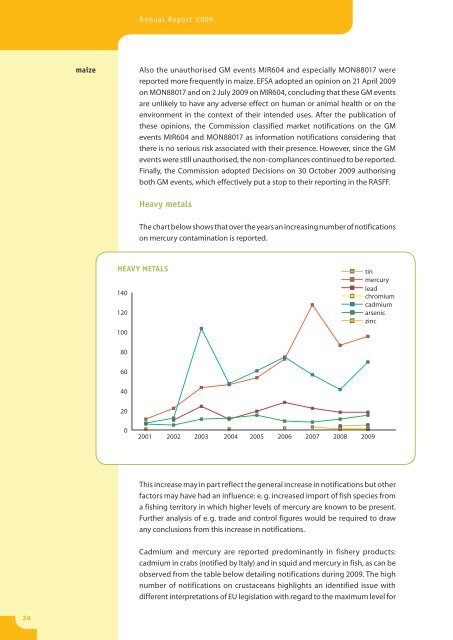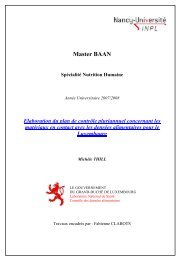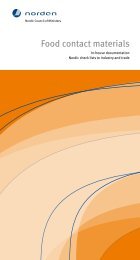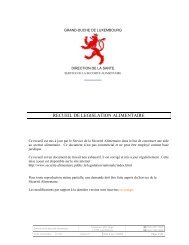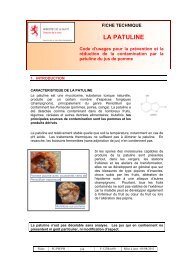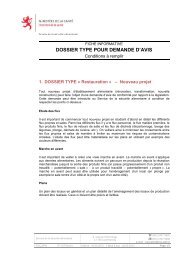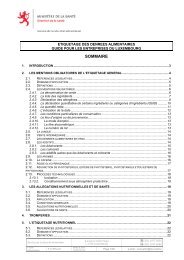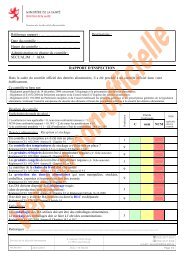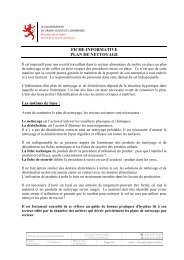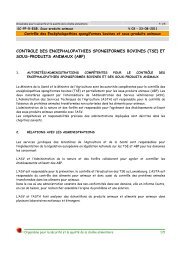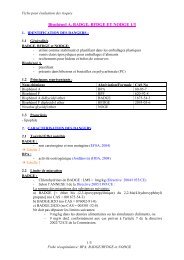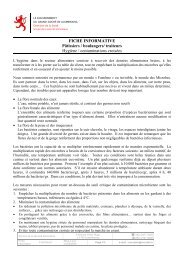(RASFF) Annual Report 2009 - European Commission - Europa
(RASFF) Annual Report 2009 - European Commission - Europa
(RASFF) Annual Report 2009 - European Commission - Europa
Create successful ePaper yourself
Turn your PDF publications into a flip-book with our unique Google optimized e-Paper software.
<strong>Annual</strong> <strong>Report</strong> <strong>2009</strong><br />
maize<br />
Also the unauthorised GM events MIR604 and especially MON88017 were<br />
reported more frequently in maize. EFSA adopted an opinion on 21 April <strong>2009</strong><br />
on MON88017 and on 2 July <strong>2009</strong> on MIR604, concluding that these GM events<br />
are unlikely to have any adverse effect on human or animal health or on the<br />
environment in the context of their intended uses. After the publication of<br />
these opinions, the <strong>Commission</strong> classified market notifications on the GM<br />
events MIR604 and MON88017 as information notifications considering that<br />
there is no serious risk associated with their presence. However, since the GM<br />
events were still unauthorised, the non-compliances continued to be reported.<br />
Finally, the <strong>Commission</strong> adopted Decisions on 30 October <strong>2009</strong> authorising<br />
both GM events, which effectively put a stop to their reporting in the <strong>RASFF</strong>.<br />
Heavy metals<br />
The chart below shows that over the years an increasing number of notifications<br />
on mercury contamination is reported.<br />
HEAVY METALS<br />
140<br />
120<br />
100<br />
tin<br />
mercury<br />
lead<br />
chromium<br />
cadmium<br />
arsenic<br />
zinc<br />
80<br />
60<br />
40<br />
20<br />
0<br />
2001 2002 2003 2004 2005 2006 2007 2008 <strong>2009</strong><br />
This increase may in part reflect the general increase in notifications but other<br />
factors may have had an influence: e. g. increased import of fish species from<br />
a fishing territory in which higher levels of mercury are known to be present.<br />
Further analysis of e. g. trade and control figures would be required to draw<br />
any conclusions from this increase in notifications.<br />
Cadmium and mercury are reported predominantly in fishery products:<br />
cadmium in crabs (notified by Italy) and in squid and mercury in fish, as can be<br />
observed from the table below detailing notifications during <strong>2009</strong>. The high<br />
number of notifications on crustaceans highlights an identified issue with<br />
different interpretations of EU legislation with regard to the maximum level for<br />
24


